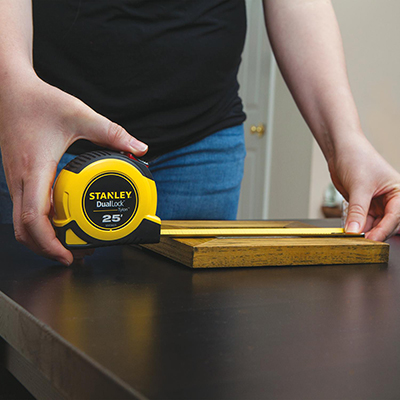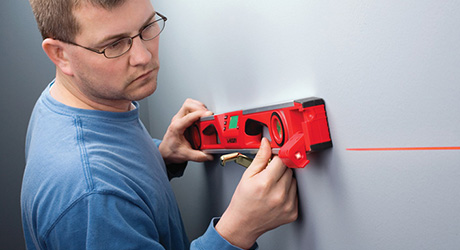How to Calculate Square Footage

Last updated February 27, 2025
For most home improvement projects, knowing how to calculate square footage is an important skill. From flooring and painting to landscaping, square footage is a necessary measurement to get the right amount of materials for your project.
Accurate square footage measurements are useful when buying and selling homes as well. This guide explains how square footage is calculated and outlines the square footage formula,
so you’re ready for your next project.
Difficulty:
Beginner
Duration:
Under 2 hours
Table of Contents
Measure the Area
Apply the Square Footage Calculation
Account for Odd Dimensions
Adjust for Waste
Importance of Knowing About Square Footage
Square Footage Calculator Tools
Measure the Area

When it comes to knowing how to calculate square footage, first measure the dimensions of your space. The two dimensions to measure are
the length and width of the area
you need to calculate.
- To find length, locate the longest side of the area to be measured.
- Fix a
tape measure
or other
measuring tool
to one end of the length and extend it to the other end. - Record the measurement.
- To find the width, locate the shortest side of the area to be measured. Repeat the process and record that measurement.
Apply the Square Footage Calculation

The next step in
how to calculate square footage
is to plug your measurements into the square footage formula: L x W = A
(in square feet).
How to find square feet: multiply the length measurement in feet by the width measurement (in feet). This yields a product called the area, which is expressed in square feet (or square inches if you are calculating a much smaller space, such as a dollhouse).
For example, if you are buying carpet for a room that is 12-feet long and 10-feet wide, multiply the two dimensions:
- 12 ft. x 10 ft. = 120 sq. ft.
Account for Odd Dimensions

Part of knowing how to calculate square footage is accounting for odd room dimensions or additional areas that don't neatly connect with your main room. In this case, to calculate the square footage accurately using a square foot calculator, you may need to divide the space into separate areas.
- Divide the space into smaller sections.
- Measure each section separately and calculate the square footage of each.
- Use a calculator to add the numbers together to get the total square footage.
For example, assume you are trying to buy flooring for a rectangular room with a nook. The shape is of a large rectangle and a smaller rectangle.
- Find the length and width of each section
(labeled A and B here), then calculate each square footage:
A: 3 ft. x 7 ft. = 21 sq. ft.
B: 12 ft. x 10 ft. = 120 sq. ft.
- Then, add the three values together to get the total square footage you’ll need:
120 sq. ft. + 21 sq. ft. = 141 sq. ft.
- Therefore, you’ll need 141 sq. ft. of flooring materials.
Adjust for Waste

Once you’ve found the quantity of material you need to complete your project, adjust the amount for waste. This doesn’t mean that you are planning to waste the materials, but mistakes can happen. If you accidentally break tiles or spill paint and you have only the exact amount you needed, you may find yourself scrambling to replace your materials. Or worse, in the case of some materials, you may find yourself unable to get an exact color match with the first batch you ordered.
Order 5 to 10 percent more of your materials when figuring out how to calculate for square footage. This way, you're covered.
Materials like tile can often be returned if they haven’t been opened or used, so that you can recover a little of your extra cost once the project is complete. However, you may find it helpful to store the extra materials, in case you need to replace tiles, patch carpet or touch up paint down the road.
Importance of Knowing About Square Footage

In addition to making home improvement projects easier, knowing how to calculate square footage makes you a more knowledgeable home buyer and home seller. Learn this simple skill to compare properties when purchasing. Knowing how to calculate this measurement with a square foot calculator is useful for evaluating or comparing properties when you're the seller. Knowing your property's square footage helps when you need a building permit to convert an unused basement or attic into living space.
Tip: The square footage of a house usually includes finished living spaces that includes walls, floors, ceilings and heat.
This can include finished attics, basements, garages and staircases.
Square Footage Calculator Tools

Here's a list of what items to have on-hand to calculate your square footage.
- Tape Measure/Long Tape Measurer
- Laser Distance Measurer
- Measuring Wheel
- Standard Calculator
- Square Foot Calculator
Learning how to calculate square footage and how to find square feet will help you in many future DIY projects. If you're short on time, there are also online square footage calculators that can help with your measurements. Plus, our project calculators help you find out exactly how much of a specific material you’ll need.



























